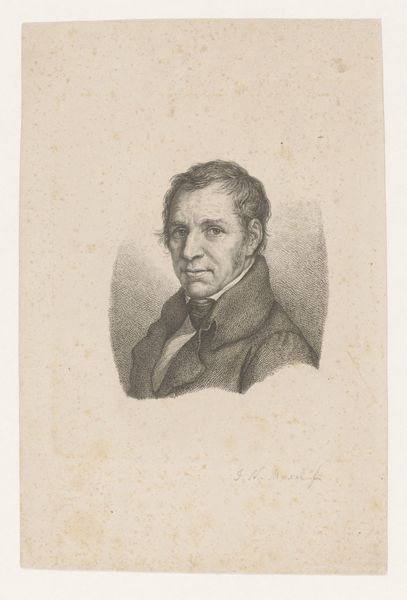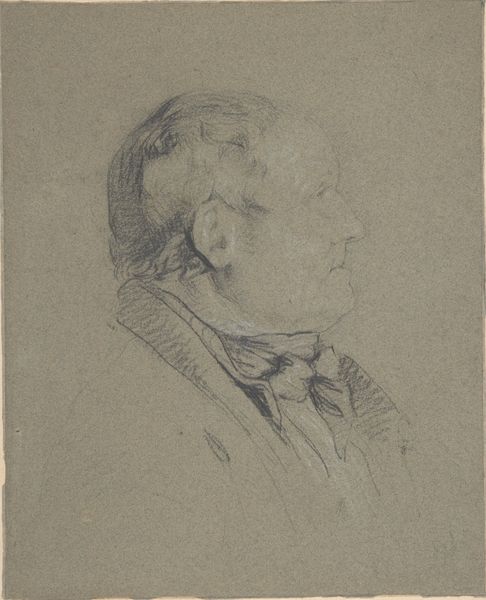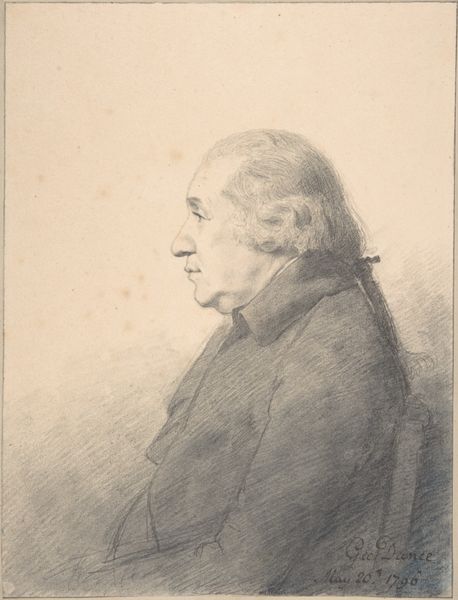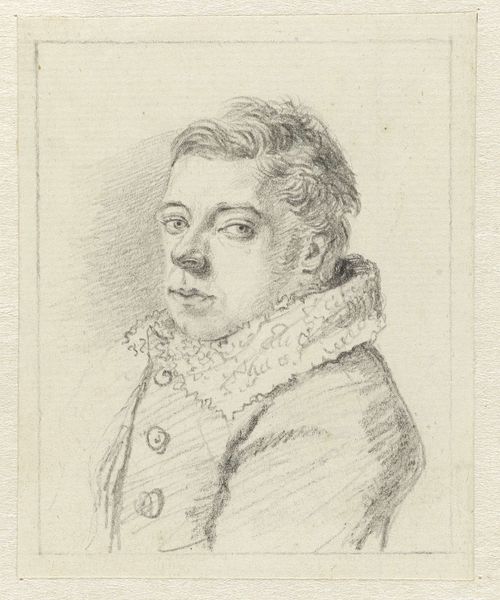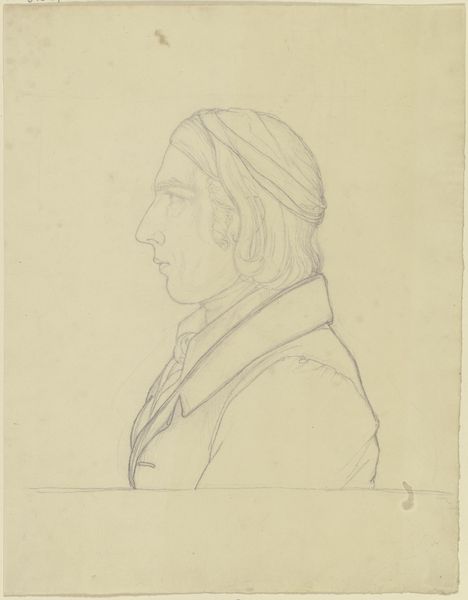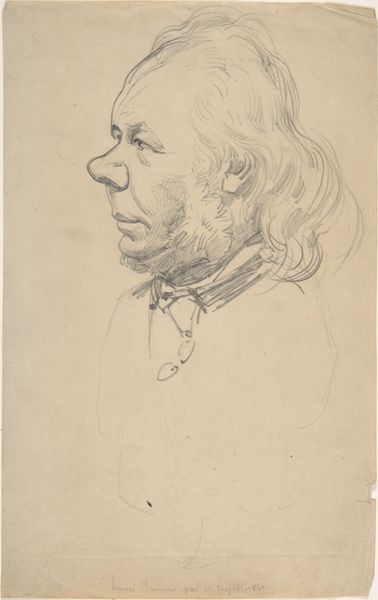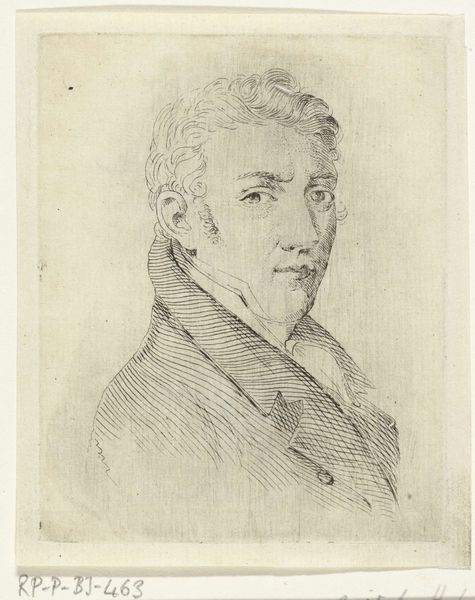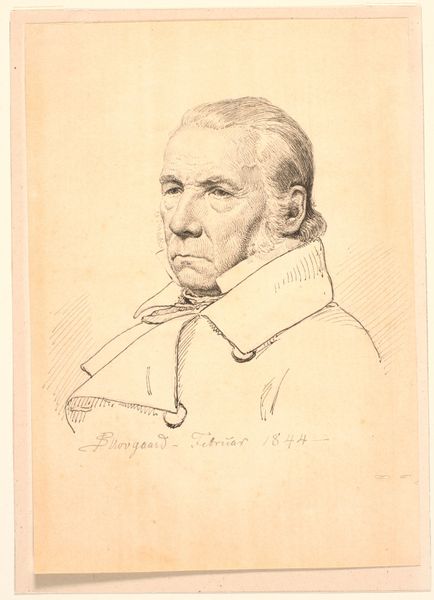
Copyright: Public Domain
Curator: Here we have a work entitled "Portrait of Fanny Janauschek," created around 1860 by Johann Philipp Hoff. It's currently held here at the Städel Museum. Editor: My initial thought? The materiality feels very delicate, almost ephemeral. It’s a pencil drawing on paper, right? I’m immediately drawn to the handwork involved in rendering such soft tones. Curator: Absolutely. This portrait is indeed crafted with pencil on paper and offers an interesting window into the subject’s role. Janauschek was a prominent actress of her time. Hoff, the artist, was positioning himself within Frankfurt society by portraying notable figures. This demonstrates the performative role of portraiture. Editor: It makes me think about the role of the artist as a kind of craftsman, carefully constructing an image. Consider the textures of the paper, the grade of pencil used… all those subtle choices contribute to the final product. Was paper readily available then? What determined its quality? Curator: Those are vital questions! Availability certainly shaped artistic practices. In terms of artistic value, drawings like this also served as important records of the celebrity of the era. It's fascinating to see how the cultural capital of the sitter intersects with the artist's skill in creating a lasting impression. Editor: It strikes me how seemingly simple the technique is – pencil on paper – yet it conveys so much. And Hoff's attention to detail... even a sketch demands intense concentration, physical exertion and labor to achieve likeness. Curator: Precisely. Hoff capitalizes on Janauschek's established reputation to showcase his own abilities and to cement his role within a cultural sphere. It underscores the reciprocal relationship between the sitter and the artist. Editor: Thinking about the end user of this artwork also brings interesting social considerations. What did paper mean at the time, what did a portrait such as this signify? And the act of drawing—in and of itself? All signs of class privilege and power. Curator: A wonderful point to consider, which enhances our understanding. This drawing acts as more than a depiction; it actively participated in constructing and perpetuating cultural narratives of the mid-19th century. Editor: It makes one reflect on labor, celebrity, and social position reflected in such "simple" form. Curator: It does indeed leave us pondering those connections. Thanks to that layered material and social lens, we gain a new appreciation for the portrait’s multifaceted context and enduring impact.
Comments
No comments
Be the first to comment and join the conversation on the ultimate creative platform.
